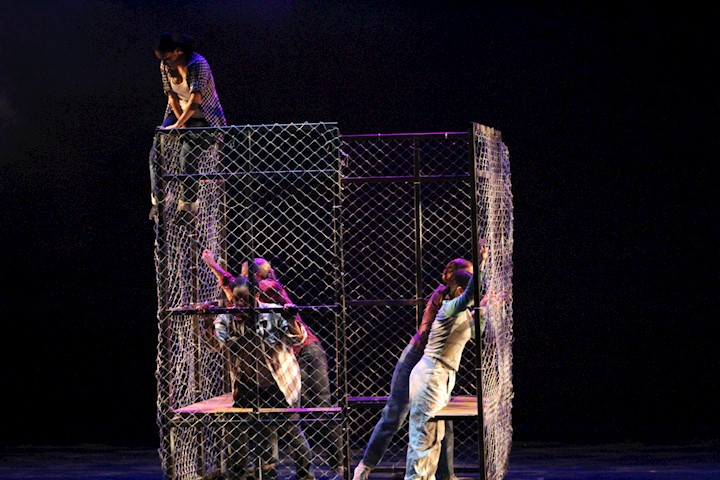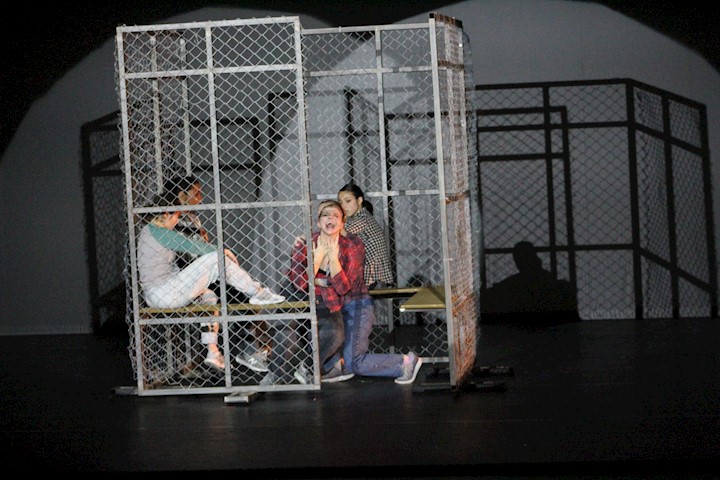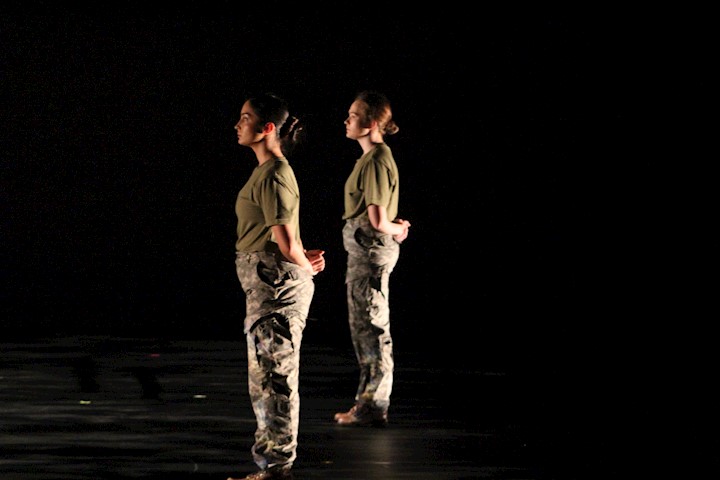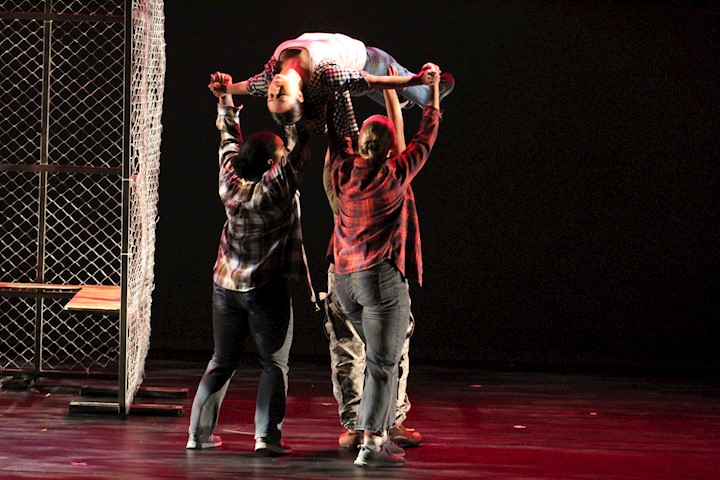As an artist (practitioner, dancer, choreographer), I am compelled to implement a spirit of activism in my work in response to the current political, social, and cultural issues in the United States. My research and performance projects explore bearing witness through dance and specifically explores new ideas and methods for creating performance art that responds to migration, race, class, identity, hatred, and violence in an imaginative, artistic and therapeutic way. My performance project is my way of bearing witness to the unimaginable trauma and suffering experienced by families, specifically, by the women and children at the Texas-Mexico border.
The images and video footage of children being taken from their mothers deeply disturbs me. The horrific trauma of the situation pulls at my soul. As an artist, I process the pain through movement. Before I know it, the movement becomes phrases, and the phrases become a narrative and a story of survival. I worked through my body to find the right movements to bear witness for the events at the border. As I worked, I asked myself questions:
- How can dance bring voice and healing to people at the border?
- How can this effort influence others to bear witness in their own way?
- How can this project inform and possibly persuade others to think critically about the crisis at the Texas-Mexico border?
I shared the videos and images with the dancers at Texas State University before we started the rehearsal process because I needed the dancers to see the victims’ faces, hear their stories, and see their pain before we attempted to give a voice to the voiceless and encourage others to get up and stand up for change. In full disclosure, my daughter was born in Texas and has Mexican ancestry, so I have a personal investment in the larger narrative. I expressed my need to create a piece that would cry out for families experiencing this horror, and one that would impact the audience. It had to make people think. Furthermore, most of my students at Texas State University also have Mexican roots, and many of them were born and raised by the border.
The principal dancer in this piece is from Laredo, TX, and she also happens to have a personal connection to the character she’s portraying. I asked her how the choreography and the story of the piece impacted her. She stated,
“I have seen and felt the pain that my friends back at home have gone through because of what’s happening at the border. When I’m dancing in this piece, I offer my movements up as a prayer for them and their families. There is a section in the piece where I dance inside a crowded holding cell with other women who have also been caught trying to cross the border. In that moment, I am caught. I feel very vulnerable, and it’s not a feeling I’m used to. The piece makes me think of the women who are going through this. It makes me think about what they might feel in those scary moments. They don’t have a person to stick up for them. They don’t have a person to speak for them. I love performing in this piece because I feel like it brings awareness to what’s happening right now. We’re not sugar coating anything. The audience witnesses my newborn baby being literally ripped from my arms in the beginning of the piece. There are a lot of choreographers who would sugar coat the truth. We’re not afraid to go there. We’re not afraid to tell the story. For me, this piece is important because I feel like this is my way of helping my friends and their families. This is my way of giving a voice to those who don’t have a voice.”
The piece opens with a woman running-trying to cross the border. She sprints, stops, crawls and jumps frantically across the stage, trying to evade the wildly moving search lights. Another female emerges next trying to cross the border with her newborn baby. She stumbles into a male border patrol agent who immediately calls for backup from other agents. The agents wrestle the woman to the ground and rip the child from her arms, and then drag her off. Both women are caught and are put in a tiny holding cell with other women who were caught trying to cross the border. The women are handcuffed, dirty, and their spirits are crushed. They have no voice. They feel hopeless. All of them have given up, except the one young mother who decides to fight for her child, and who rallies the other women to get up with her, to fight for their families, and to be treated as human.
The images of the mothers and their children at the Texas-Mexico border still live in my consciousness, in my own sense of being a mother. I can sense the pain in my own body at the memory of those women, their children and wherever they might be now. Creating this piece is my way of processing the trauma occurring at the border, and through choreography, I am able to bear witness and to include activism in my work. I could not imagine the horror of not knowing where my child was, who she was with, and the trauma she would have to endure from having been taken from the only family she has ever known. The reality for the mothers at the Texas-Mexico border is not done justice by my tears, nor by my work, but I will continue to bear witness the best ways I know how, as an artist, and as a mother.
The space of the border and the politics found there provide a rich context for exploring ideas of community and healing, through dance and choreography. I can imagine engaging families at the border or in similar spaces where there is trauma and using dance and choreography to build community and to heal. We all have a story to tell, and I would like to offer an opportunity for people to tell their stories through dance.




